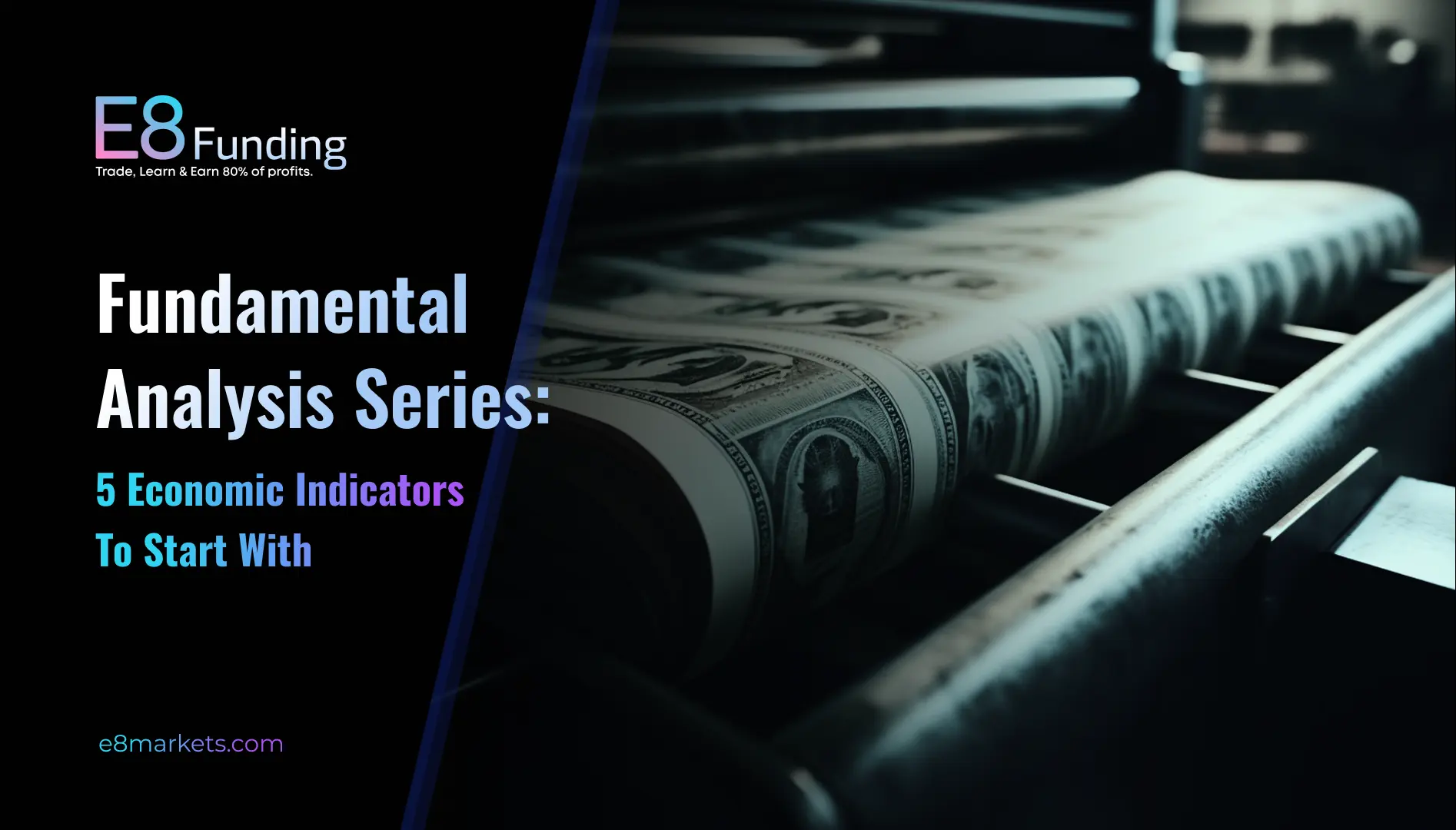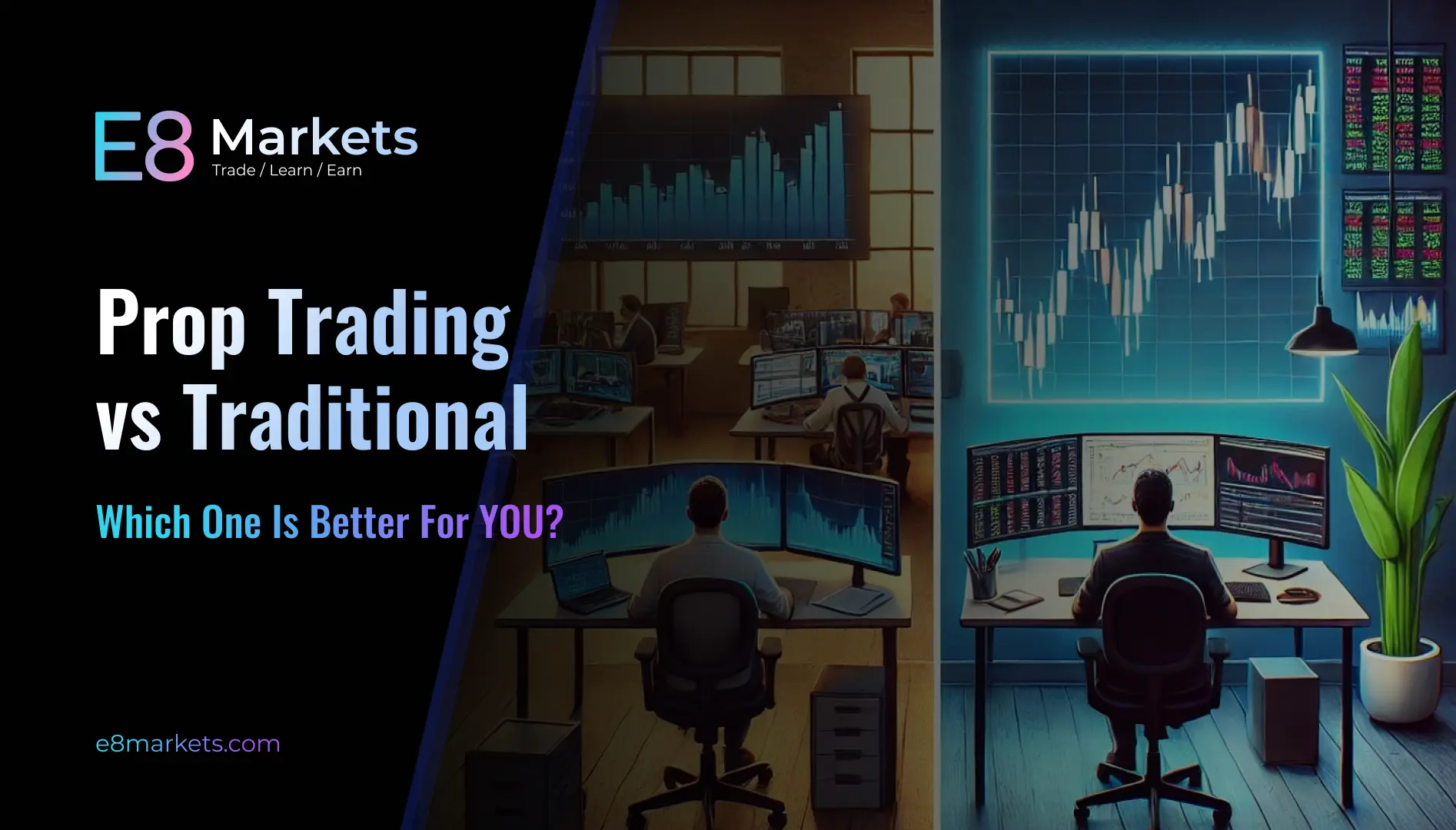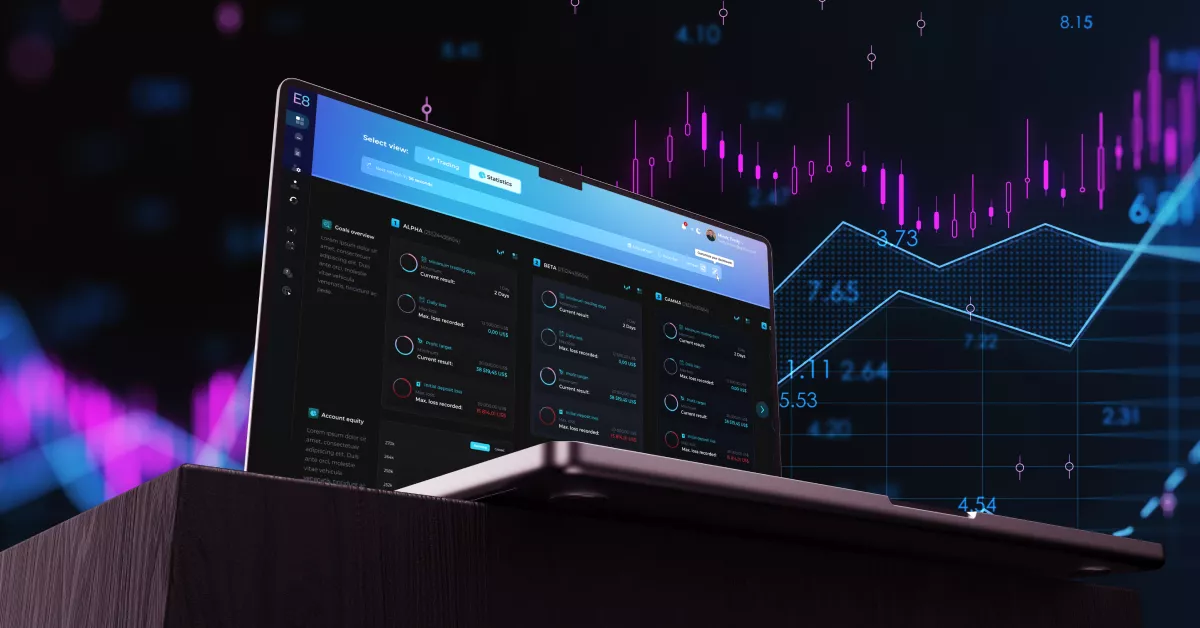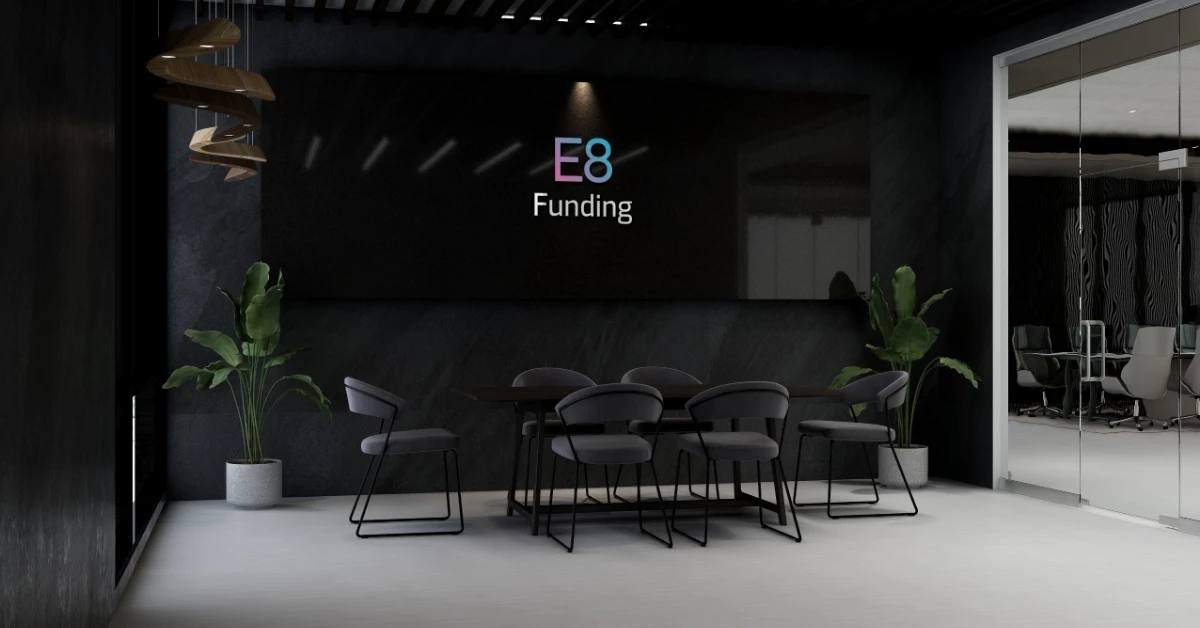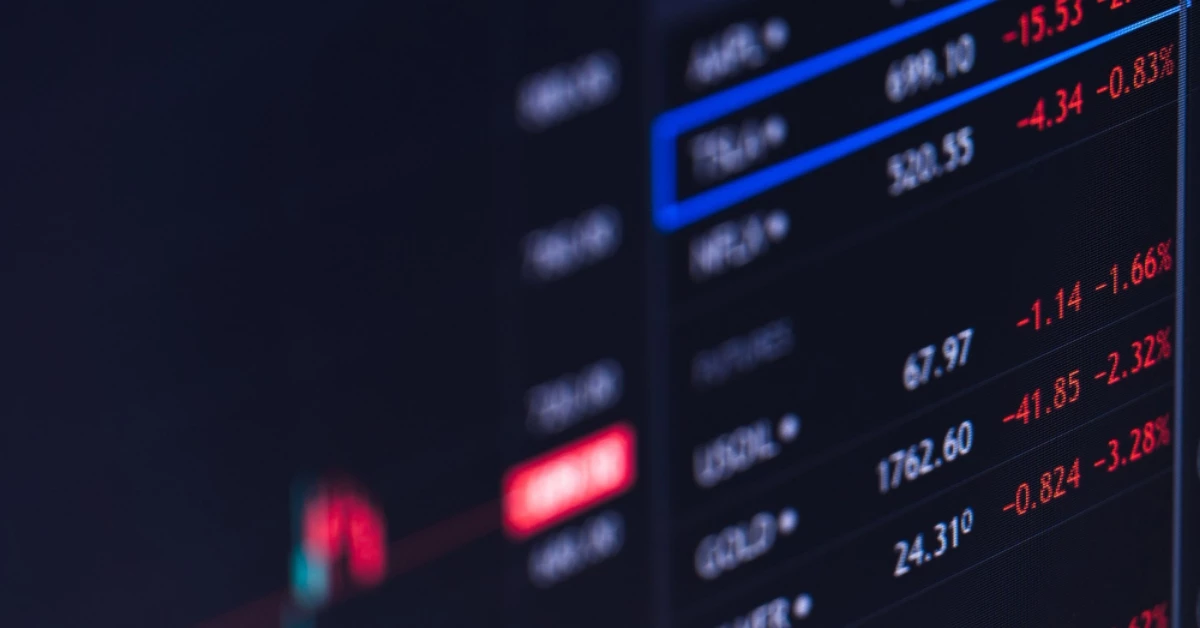Forex Terms Explained: The Essential Jargon Every Trader Should Know
You have probably heard of common Forex terms like pip, spread, or leverage. But do you know what they mean exactly? More importantly, do you know how to use this knowledge? To comprehend Forex trading strategies, you must understand these terms thoroughly. Trading without understanding the basic terms means unwise and risky trades. We at E8 Markets won’t just give you a Forex glossary here. We will explain Forex trading terms and show you how to use them. This way, you will learn how the Forex market works and how to make smarter decisions.
Basic Forex Terms
You need to start with the essential Forex jargon. It will help you read the market and calculate profits or losses. These are the core Forex terms that shape every trade:
- Pip
- Lot
- Bid and ask
- Spread
- Currency pair
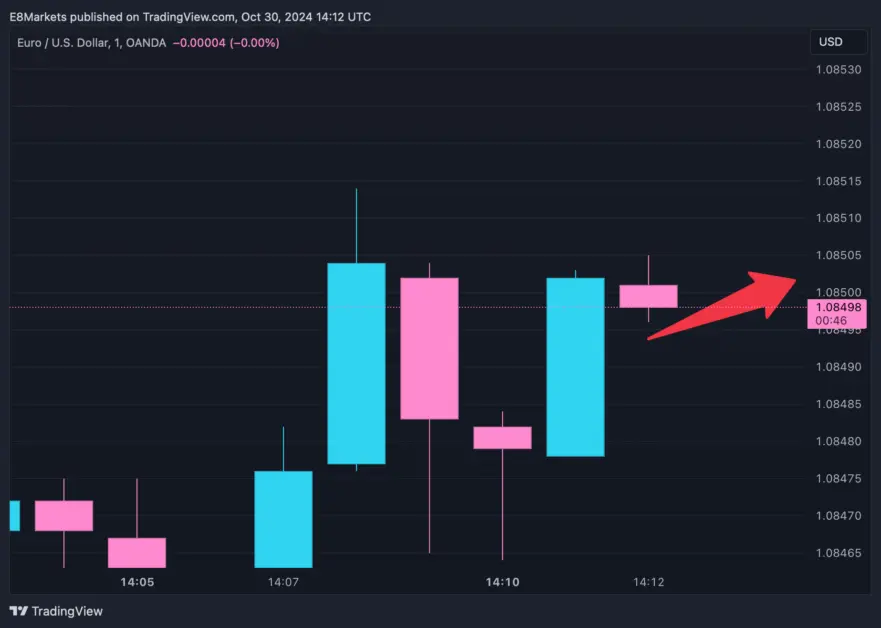
Pip
Understanding Forex terms starts with a pip. Pip is short for percentage in point. It is the smallest possible movement in the price of a currency pair. For most currency pairs, a pip is equal to 0.0001. This tiny change might seem small, but in Forex trading, these small price movements can add up, especially when trading large amounts.
Think of a pip as a unit for measuring price change. Imagine you buy EUR/USD at a price of 1.1050, expecting the price to rise. If it moves up to 1.1060, that’s a 10-pip increase. If each pip is worth $1 based on your trade size, then your profit from that move would be $10.
Pip is an essential Forex trading jargon for beginners. It is important because it is the main way you measure both potential profits and losses. When you trade, each pip movement affects how much you gain or lose. The value of each pip depends on the size of your trade, often called the lot size.
Lot
A lot is another key part of Forex terminology. It is the standard size of a trade. It is the amount of currency you’re buying or selling in a trade. Forex doesn’t use individual units like 1 dollar or 1 euro. Instead, trades are made in lots to streamline the process and increase efficiency. To understand the Forex glossary better, you need to know the three main types of lots:
- Standard lot: 100,000 units
- Mini lot: 10,000 units
- Micro lot: 1,000 units
Why does lot size matter? It matters because the size of the lot you choose affects the value of each pip in your trade. Larger lots mean that each pip movement has a bigger impact on your profit or loss. For example, with a standard lot, each pip is worth about $10. With a mini lot, each pip is worth $1. Suppose you trade one mini lot of EUR/USD, and each pip is worth $1 for this lot size. If the price moves by 10 pips, your profit or loss will be $10, depending on the direction of the trade.
Bid and Ask
Every currency pair has two prices: the bid price and the ask price. These prices show you the rates at which you can sell or buy the currency pair, which is why they are among the most important Forex terms. The bid price is the price at which you can sell the currency pair. Ask price is the price at which you can buy the currency pair. These two prices are slightly different, with the ask price always being a bit higher than the bid price. The difference between them is called the spread, which is also an important term in the Forex dictionary.
The bid and ask prices affect the cost of your trade. You buy at the higher ask price and sell at the lower bid price, meaning you start each trade slightly in the negative because of this difference. As the price moves in your favor, your position moves toward profit. Let’s say the EUR/USD currency pair has a bid price of 1.1050 and an ask price of 1.1052. If you want to buy EUR/USD, you’ll pay the ask price of 1.1052. If you want to sell it, you’ll receive a bid price of 1.1050.
Spread
The spread is the difference between the bid and ask prices of a currency pair. It represents the cost you pay to enter a trade. Since the ask price (buying price) is always slightly higher than the bid price (selling price), you will pay a bit more than the market value when you buy and receive a bit less than the market value when you sell. The spread is how you make money on your trades, which is why it is among the most important Forex trading terms.
A lower spread means you pay less to open a trade, while a higher spread costs you more. The spread can vary depending on factors like the currency pair and market conditions. Commonly traded pairs like EUR/USD tend to have lower spreads, while less frequently traded pairs, called exotic pairs, usually have higher spreads. Let’s say the EUR/USD bid price is 1.1050, and the ask price is 1.1052. The spread here is 2 pips (1.1052 – 1.1050). This means you need the trade to move at least 2 pips in your favor to break even.
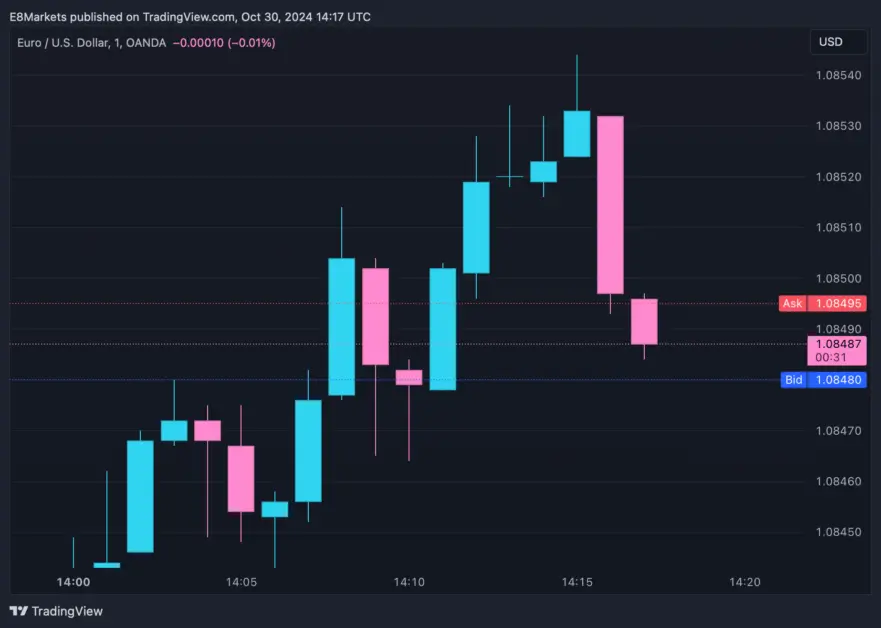
Currency Pair
When you trade in Forex, you always trade one currency against another. We call this combination a currency pair. You need to know what this Forex terminology means. Each pair consists of two currencies: the first is the base currency, and the second is the quote currency. When you trade a currency pair, you are buying one currency while selling the other.
For example, in the currency pair EUR/USD, EUR is the base currency, whereas USD is the quote currency. If EUR/USD is trading at 1.1050, it means 1 Euro is worth 1.1050 U.S. Dollars. When you buy EUR/USD, you are buying Euros and selling U.S. Dollars, expecting the Euro to strengthen against the Dollar. Let’s say EUR/USD is priced at 1.1050. If you believe the Euro will rise against the Dollar, you might buy EUR/USD. If it increases to 1.1070, you could sell it at a profit of 20 pips. With 1 standard lot trade, which makes $10 for each pip, you can close the trade with a $200 profit.
Types of currency pairs are also among Forex trading terms you should know. They are:
- Major pairs – These are the most traded pairs, like EUR/USD or USD/JPY. They typically have lower spreads.
- Minor pairs – Pairs that do not include the U.S. Dollar, like EUR/GBP.
- Exotic pairs – Combinations of a major currency with less-traded ones, like USD/TRY. These pairs often have higher spreads.
Trading Mechanics
To make strategic decisions and improve risk management, you need to know trading mechanics. They will help you control your position, protect your account, and lock in profits. To be successful, you need this Forex terminology explained simply:
- Leverage
- Margin
- Stop-loss order
- Take-profit order
Leverage
Leverage allows you to control a larger position with a smaller balance. In Forex trading, leverage acts as a borrowing that increases the size of your trades. Leverage is shown as a ratio, like 1:50 or 1:100, which indicates how much you can trade compared to the money in your account.
For example, with 1:50 leverage, you can control a $50,000 position with just $1,000 of your account balance. This setup can boost your potential profits because you are trading a larger amount than what’s in your account. However, leverage also increases potential losses, since any loss is calculated on the full position size, not just your initial investment.
Leverage can amplify both gains and losses, which makes it an important term in the Forex glossary. While it allows you to trade larger positions, it also increases your risk exposure. Suppose you have $1,000 in your account and use 1:100 leverage to “control” a $100,000 position in EUR/USD. If the price moves up by 1%, you could gain $1,000 (doubling your account). But if the price moves down by 1%, you would lose $1,000, wiping out your account. However, with such a large trade size, you would be stopped by a margin call with the slightest price move against you.
Margin
Margin is another key part of the Forex dictionary. It is the amount of money you need in your account to open and hold a leveraged position. When you use leverage, you don’t need the full value of the trade upfront. Instead, the provider requires a percentage of that trade value, called the margin, as a form of security. Margin is typically expressed as a percentage, such as 1%, 2%, or 5%.
When you open a position, the required margin amount is set aside from your account balance as a “security deposit” until you close the trade. If the market moves against you and your account balance drops below the margin requirement, you may face a margin call (covered next), which would require you to add more funds or close positions to meet the requirement.
Suppose you want to open a position worth $100,000 in EUR/USD, and the firm requires a 2% margin. You would need $2,000 in your account to open this trade. If your balance falls below this required margin due to market losses, you may need to add more funds to keep the position open.
Margin Call
If your balance falls below the margin required to keep your trade open, you will receive a warning. In Forex terminology, we call it a margin call. A margin call means you no longer have enough funds to cover potential losses. When a margin call occurs, you will need to deposit more to your account or close some positions to meet the margin requirement. If you don’t act, your provider may automatically close positions to prevent further losses.
Stop-Loss Order
A stop-loss order is a crucial term in the Forex glossary. It is an instruction to automatically close a trade if the price reaches a specified level, helping to limit potential losses. This order type is crucial for risk management, especially in a fast-moving market where prices can change quickly. By setting a stop-loss order, you establish a maximum loss you’re willing to accept on a trade. This way, even if the market moves against you while you’re away from your trading platform, your position will close automatically at the set level.
If you’re trading EUR/USD and set a stop-loss 30 pips below your entry price, your position will close if the price drops by 30 pips. When volatility is high, setting a wider stop-loss can help avoid premature closures, while in low-volatility conditions, a tighter stop-loss may work better.
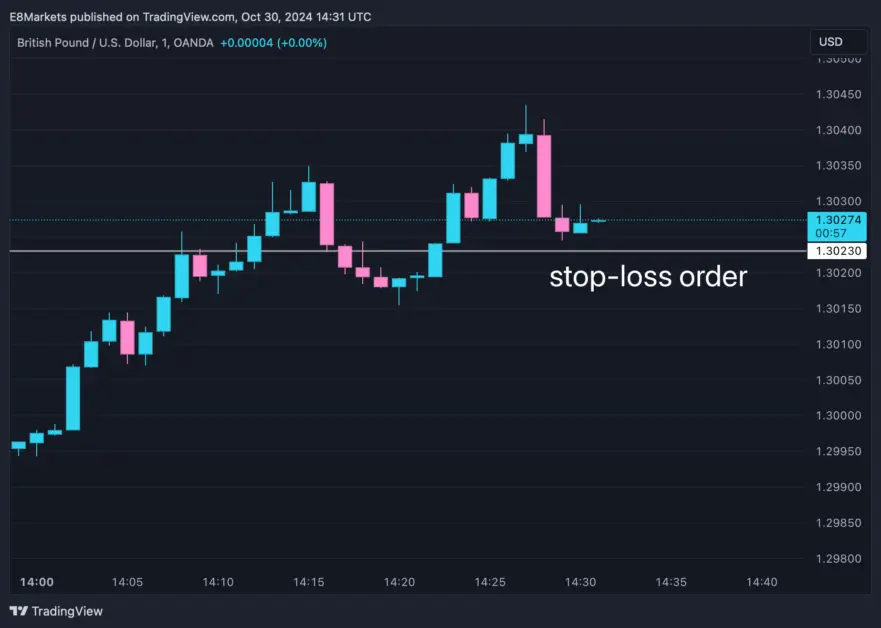
Take-Profit Order
A take-profit order is an instruction to automatically close a trade when it reaches a specified price. It allows you to lock in profits. This order ensures that your position closes once it hits your target, so you don’t miss out on gains if the market later reverses. If you’re trading EUR/USD and expect it to rise, you could set a take-profit order 50 pips above your entry price. When the price reaches that level, your trade will close, which will secure your profit. You can determine your take-profit order using technical indicators. These orders are useful in strategy planning, as they help you define your profit goals and stick to a disciplined approach.
Advanced Forex Terms
To manage the complexities of Forex with more precision, you need to get familiar with more advanced terms in the Forex dictionary. They will protect you against unexpected moves and help you handle volatile markets. Here are some Forex terms you should know:
- Swap
- Carry trade
- Hedging
- Slippage
Swap
A swap (or rollover interest) is the interest paid or earned for holding a position overnight. This fee results from the difference in interest rates between the two currencies in a pair. Depending on the interest rates, you may either earn or pay a swap on your position.
A swap can be positive or negative. If the currency you bought has a higher interest rate than the one you sold, you’ll likely earn interest. On the other hand, if the currency you bought has a lower interest rate than the one you sold, you’ll pay interest.
Swaps are calculated based on the interest rate difference and the size of your position. Most providers apply swaps automatically at the end of each trading day when a position is kept open overnight. Additionally, swaps may be charged at a “triple rate” on Wednesdays to cover the weekend. If you hold a long-term position in a currency pair with a high negative swap, these swap charges can add up over time, potentially reducing profits. On the other hand, a position with a positive swap can contribute to gains if held overnight. If you plan to keep trades open for extended periods, being mindful of swap rates can help you better manage overall profitability.
Carry Trade
A carry trade is a strategy where you borrow funds in a currency with a low interest rate to invest in a currency with a higher interest rate. The goal is to profit from the difference in interest rates between the two currencies. This strategy is popular for traders looking to earn additional returns on longer-term positions by holding onto currency pairs that offer a positive interest rate difference.
In a carry trade, the trader benefits from the interest rate differential between the two currencies. If the interest rate on the currency bought is higher than that of the currency sold, you can earn interest daily as long as the position is held open. However, if the currency pair moves against the trader’s position, losses can offset any interest gains.
Common currency pairs for carry trades include AUD/JPY and NZD/JPY, where the Australian and New Zealand dollars tend to have higher interest rates compared to the Japanese yen. By holding a position in AUD/JPY, you can potentially earn daily interest.
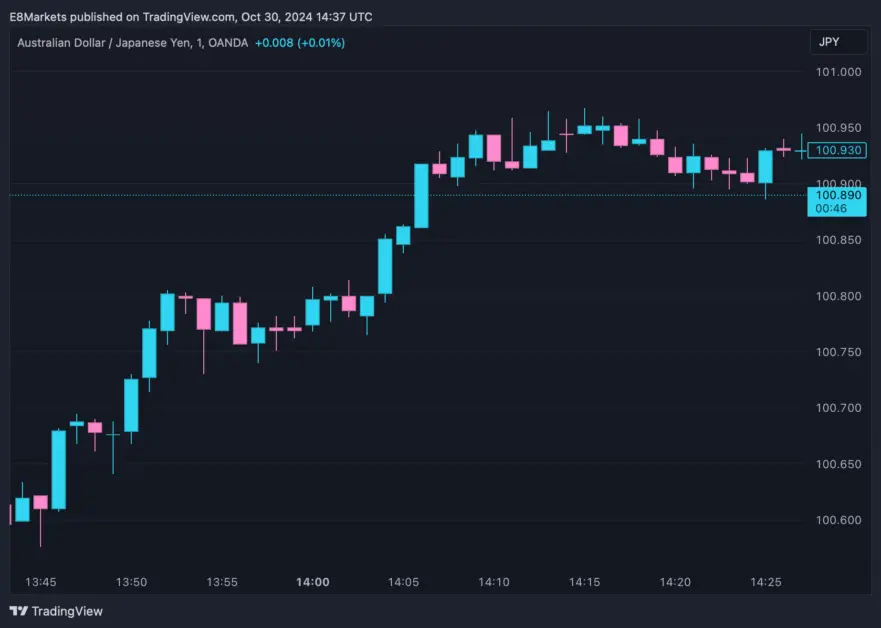
Hedging
Hedging is a strategy you use to reduce potential losses by opening one or more offsetting positions in the market. By hedging, you aim to protect yourself against unfavorable price movements in volatile markets. There are two types:
- Direct hedging: Opening a position opposite to an existing trade in the same currency pair. For example, if you have a long position in EUR/USD, you open a short position in EUR/USD to limit potential losses.
- Cross hedging: Using a related currency pair to offset a position. For instance, if you’re long on GBP/USD, you might take a short position in EUR/USD to hedge, as these pairs can sometimes move in similar directions, and both are quoted in the US Dollar.
Suppose you have a long position on EUR/USD, but market conditions are becoming unpredictable. To limit risk, you might open a sell position on EUR/USD as a hedge. This way, if EUR/USD moves against your original buy position, the sell position can help offset losses. Once the market stabilizes you exit the hedge position to start profiting on your initial longs.
Slippage
Slippage is the difference between the price at which you expect a trade to execute and the actual price at which it gets filled. Slippage can happen during times of high volatility, such as major news releases or economic events, when there’s a lot of buying and selling pressure in the market. In such cases, the price may “slip” before your trade order is processed, which leads to a different execution price.
To understand why slippage is among key Forex trading terms, let’s take a look at an example. If you place a buy order for EUR/USD at 1.1050 during a volatile market, your trade might actually execute at 1.1053 or 1.1047, depending on market conditions. This small difference can impact your profits or losses.
Lay the Foundation and Grow with Every Trade
To even begin trading, you need a clear understanding of the core Forex terminology. All Forex trading terms—whether it’s pip, margin, leverage, or spread—help you read the market and make smarter decisions. To excel and become a successful trader, you need to deepen your knowledge continually. Without understanding Forex terms, your trades are a guessing game. The more you learn and build on these concepts, the more strategic, focused, and adaptable you will become.
Trade with E8 Markets
Start our evaluation and get opportunity to start earning.Disclaimer
The information provided on this website is for informational purposes only and should not be construed as investment advice. Always conduct your own research and consult with a qualified financial advisor before making any investment decisions. We do not endorse or promote any specific investments, and any decisions you make are at your own risk. This website and its content are not responsible for any financial losses or gains you may experience.
Please consult with a legal professional to ensure this disclaimer complies with any applicable laws and regulations in your jurisdiction.

